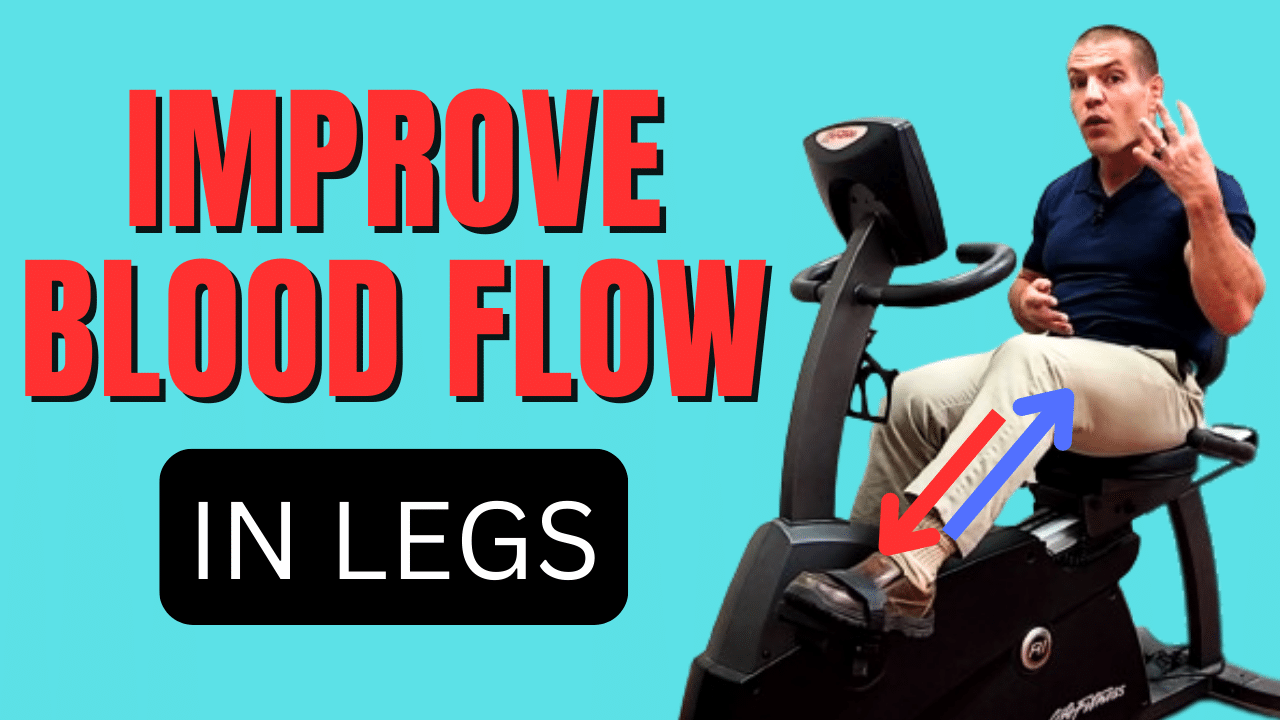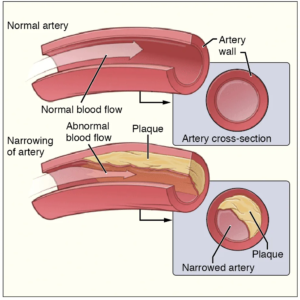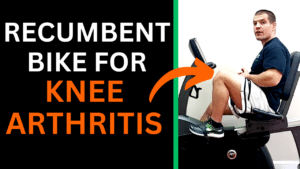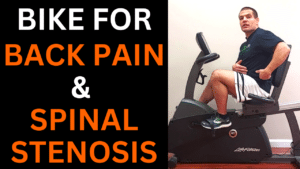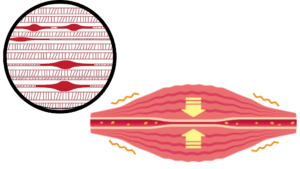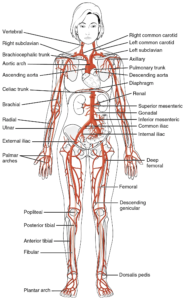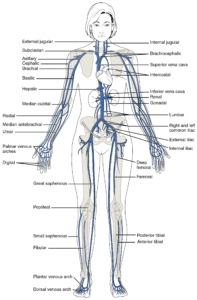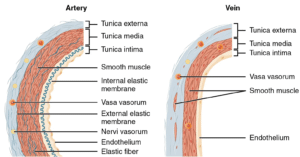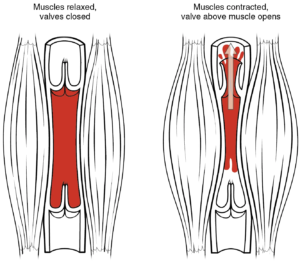Do You Want To Improve Circulation In Your Legs And Feet?
Having good blood flow in your legs and feet is important. Proper blood circulation allows you to walk loner without your legs getting tired and it promote proper tissue healing. Watch the video to learn how to improve blood circulation in the legs and feet.
Why It's Important To Improve Blood Circulation In Your Legs
Having proper circulation in your legs is incredibly important because without good blood flow, you don't get the nutrients and oxygen for your muscles to work and for your tissues to heal and repair.
This can result in things like ulcers that develop down in your feet.
It can result in problems like neuropathy, leg pain when walking, coldness of your toes, and numbness and tingling in your toes.
So, it's really important to get good circulation in your legs.
But there's a lot of bad information, or at least misinformation about how to improve blood circulation in your legs.
Misinformation About How To Improve Blood Circulation In Your Legs And Feet
I've seen a lot of videos recently claiming that you can improve circulation in your legs by doing calf exercises or leg exercises to activate the "muscle pump".
While that is true to a very small extent, what the muscle pump does is it essentially helps squeeze blood through your veins and return it to your heart.
But the veins in your legs only make up less than half of your circulatory system.
There are some much bigger ticket items if you do want to drastically improve the circulation in your legs.
In this post, I'll explain the top 4 ways to improve circulation in your legs and feet.
And those are, from the order of most important to least important:
Then way, way down at the bottom of the list:
- muscle pump action to help return blood through your veins
Proper Diet To Improve Blood Circulation In Legs And Feet
Let's first talk about diet.
Diet and aerobic exercise are really neck and neck for number one, but diet is really important in regards to your circulation.
It's particularly important to limit your saturated fats and your cholesterol.
Saturated fat is probably the more important and easier-to-monitor of the two from information available on food labels.
And largely, if you keep your saturated fat intake in check, your dietary cholesterol will probably follow suit.
Saturated fat usually comes from animal sources such as, high-fat meats, full-fat dairy, and to some extent eggs
Eating too much saturated fat and cholesterol can cause plaques to build up on the inside of your arterial walls.
These plaques are referred to as atherosclerosis, which literally means "hardening of the arteries."
Atherosclerosis narrows the effective opening of your arteries so that your blood has a harder time getting through.
Decreasing sugar intake
In addition to, decreasing saturated fat, it's also important to limit excessive sugar in your diet. That's especially true for processed sugar.
Not only does eating too much sugar put you at risk for developing diabetes, but it can also contribute to the development of atherosclerosis.
So avoiding excessive saturated fats and processed sugars can help improve the circulation in your legs.
Aerobic Exercise To Improve Blood Circulation In Legs
Next is aerobic exercise. Again, aerobic exercise is just as important as proper diet.
Aerobic exercise works on the muscles in your legs. Even more importantly though, it exercises the most important muscle in your entire body: your heart.
If your heart's not pumping, not only are you not going to have good circulation, but none of the other muscles are going to to be able to function either.
So, having a healthy heart is incredibly important to improving your circulation.
When you just do exercises like ankle pumps or leg exercises you're not getting your heart rate elevated.
Ideally, with aerobic exercise you should get your heart rate elevated for 20 minutes or more. If that's not happening, then you're not really improving your circulation to any great extent.
How Much Aerobic Exercise?
Most organizations in the United States such as the American Heart Association and the American College of Sports Medicine, recommend that you get 150 minutes of moderate-intensity exercise throughout the week.
Largely, they recommend five days per week of 30 minutes of moderate-intensity exercise or more.
Now, if you're exercising every day, that 150 minutes averages out to roughly 22 minutes a day.
But keep in mind, this is the very bare minimum.
Ideally, you want to shoot for at least 30 minutes per day of aerobic activity or moderate-intensity activity.
What If I Can't Exercise For That Long?
If you can't walk for 30 minutes due to either deconditioning, joint pain such as knee arthritis, or spinal stenosis where it pinches the nerves that go down to your legs, or peripheral arterial disease, then it is okay to break it up into smaller bouts.
For example:
- 15 minutes, 2 times per day
- 10 minutes, 3 times per day
- 5 minutes, 6 times per day.
And if you can't even do that, do the best you can. Get as close as you can to 20 to 30 minutes per day of total physical activity broken up throughout the day.
Exercise biking to improve blood circulation in legs
If you have knee pain, hip pain, back pain, spinal stenosis or some other condition where it hurts too much to walk, it is okay to use an exercise bike.
Click on the images below to check out articles on exercise biking:
Any form of aerobic activity where you elevate your heart rate will help improve the circulation to your legs.
That may be swimming, that may be walking in the water, that may be water aerobics classes.
It doesn't really matter as long as you can get your heart rate elevated.
That's going to help improve your heart health as well as the circulation in your legs.
If you adhere to a proper diet and get enough aerobic exercise, that alone is probably enough to improve circulation in your legs.
However, for completeness, here are the 3rd and 4th ways to improve circulation in your legs.
Improving Fascial Mobility In Your Legs To Increase Circulation.
Fascia are like an envelope that wraps all the tissues in your body, including your muscles.
And if the fascia surrounding the muscles in your legs, particularly in your calves, is too stiff or tight, it can start to constrict on the blood vessels.
If you have knots, or trigger points, in your legs, the muscle fibers in the area of the trigger point stay in a contracted state.
That contracted state can put extra pressure on the microcirculation - the capillaries and the arterioles.
Before we go any further into this discussion, we should probably review blood vessel anatomy if you don't remember that from way back when in health class.
Anatomy of the Circulatory System
Coming from your heart, you have your aorta, the largest artery in your body.
The aorta branches into into smaller and smaller arteries, and those arteries then turn into smaller vessels called arterioles.
Then the arterioles turn into capillaries, which are very, very, very tiny vessels at the tissue level where your body exchanges gas and nutrients between your blood and the target tissue.
That target tissue may be muscles or bone or something else.
Then your capillaries turn into venules, which are very small veins.
From the venules, blood flows into veins, which then return blood to your heart.
So that's the circulatory system.
Differences between arteries and veins
There are some differences between your arteries and your veins.
Your arteries have actually a muscular wall that pushes blood through your vessels down to the target tissues.
Your veins don't have those muscles, and so there's nothing to push the blood back to your heart.
That's where the muscle pump comes in, which we'll talk about a little bit later.
Your veins have valves that allow one-way return to the heart.
The valves allows blood to come closer to the heart during heart contraction.
But when the heart relaxes, the valves snap shut to prevent blood to backflowing.
Therefore, if you have normally functioning veins, then you don't need to worry too much about the muscle pump action. Cardiac and arterial contraction, along with the valves in your veins, are going to take care of a lot of the venous return.
Vascular pressure gradient promote circulation
The other difference between your vessels is that you have a descending pressure as you go from artery to arteriole to capillary to venule to vein.
That pressure gradient helps push blood from a high-pressure area (arteries) to a low-pressure area (veins).
In a normal, healthy person, your arterial pressure ranges between around 80 mm Hg when the heart is relaxed (diastolic pressure) to around 120 mm Hg (systolic pressure) when your heart is contracting.
Those numbers correspond to the bottom and top numbers of your blood pressure, respectively:
Systolic Pressure / Diastolic Pressure
When you get down to the arteriole level, the pressure around 30 to 40 mm Hg.
At the capillary level, that's around 20 to 30 mm Hg.
The the pressure gets less and less as you move to the venules and the veins.
Of note, this is why compression stockings for circulation are graded at the way they are:
- Non-Medical Grade: less than 20 mm Hg
- Medical Grade Class I: 20-30 mm Hg
- Medical Grade Class II: 30-40 mm Hg
As you start getting higher grades of compression, you risk overcoming the pressure inside the vessel and actually cutting off circulation in your legs.
Compression stockings come in a variety of sizes and colors.
These Bluemaple 6 Pack Copper Compression Socks are graded with a maximum pressure of 20-30 mm Hg at the feet and less higher in the stocking.
Make sure you talk to your doctor though to find out what grade compression socks are best for you.
What does this have to do with improving circulation in your legs?
As noted, you have that descending pressure, and then it gets less and less as you go from artery to capillary to vein.
If you have muscles and fascia that are too stiff surrounding your blood vessels, it's like wearing compression stocking that are too tight.
The pressure inside the trigger point can start to compress the arterioles and capillaries and impede circulation.
This can prevent blood from getting through to the target tissues.
Since we're talking about leg muscles in this case, you may feel like your legs fatigue quickly when you're walking.
So how do you fix of that?
Well, ideally, you want to address those trigger points or the knots in your legs.
That may be your thighs or your calves, but the calves are by far the most common.
By getting those trigger points or knots to relax, you can improve the circulation to your muscles.
You can do this in various ways, but one way to do it is just to apply manual pressure to the trigger point.
Manual Trigger Point Therapy To Improve Circulation In The Legs
Gently squeeze the muscle until you find an area that feels stiff or tight. It will also probably be sore to touch.
Then just hold a gentle pressure on that area.
You're not trying to squeeze it as hard as you can.
You're not trying to manually break up the knot either.
What you're doing is activating a neuromuscular response, which makes the muscle relax over time.
Hold for 1.5-3 minutes.
So you have to be a little bit patient while doing this, but it helps to get the trigger points to relax and take pressure off of your blood vessels.
Calf Stretches To Improve Circulation In Legs
It's a good idea to stretch your calves after doing the trigger point compression.
If you just stretch your calves without releasing trigger points first, it likely won't help as much.
Chances are the things that already stretch and move pretty well are going to get stretched more, and the things that don't stretch or move very well because they're knotted aren't going to stretch out at all.
So it's important to kind of get this hyper-focused work if you really want to help improve that local blood circulation in your legs.
Visiting a manual physical therapist can also help if you're not quite certain how to do this yourself.
Using A Massage Stick or Massage Gun To Improve Circulation In Legs
Another way that you can release trigger points in your legs it by using massage stick or a massage gun.
For example, using a massage stick, roll it along the muscles in your calves until you find a sore area.
Yansyi Muscle Roller Stick for Athletes ...
$9.15 ($9.15 / Count) (as of July 26, 2024 20:27 GMT -05:00 - More infoProduct prices and availability are accurate as of the date/time indicated and are subject to change. Any price and availability information displayed on [relevant Amazon Site(s), as applicable] at the time of purchase will apply to the purchase of this product.)Then focus down to this area so that you roll locally just over the trigger point.
Improving Venous Circulation Using The Muscle Pump
Now finally, way, way, way, way down at the bottom of the list is activating the muscle pump.
Essentially, the muscle pump is using the muscles in your calves or in your legs to help squeeze blood through the veins because your veins don't have the muscular walls.
You use the muscles around the your veins to help pump blood back through those one-way valves.
If you're not immobilized from a surgery or you're on bed rest, this can increase your risk for developing a blood clot in your leg. This is known as a deep vein thrombosis (DVT). If the clot dislodges and goes to your lungs, it can be potentially deadly.
Assessing Risk For DVT
However, if you haven't recently had a surgery where you can't move your legs for a prolonged period of time and you've got competent valves in your veins, the risk of a getting a DVT is low.
Fortunately, deep vein thrombosis can reliably be ruled out using this calculator based on the Wells Criteria for DVT. If your score is 0 or lower, you have a very low risk of DVT.
However, if you are stuck in bed or if you have recently had a surgery, that does increase your risk of getting blood clots.
In that case, it is important to activate the muscle pump to get the blood to return to your heart.
You can do that just by doing what they call ankle pumps, where you pump your foot back and forth using your calf muscles.
You can do that by doing bending and straightening your leg.
You can do weight-bearing exercises like squats.
But keep in mind, all that does is passively squeeze blood up your veins back to your heart.
So, it works momentarily at the time that you're doing it, but it has no long-term lasting effect.
Once you stop doing the movement, that vein pump stops, and everything is back the way it was when you first started.
When you do specific trigger point work, that does actually change something.
It loosens up the muscle so that you have a prolonged increase in perfusion.
Now, that doesn't last if you stop exercising for good or if you don't stretch.
But it is a longer period of improvement.
However, with proper diet and aerobic exercise, they improve things over the long-term.
They actually make your vessels healthier and make your heart healthier so that you get a long-term lasting improvement in your heart health, your vascular health, and thus your circulation.
Conclusion
In summary, the top four things for improving the circulation of your legs are proper diet and aerobic exercise tied for Number 1 and 2.
Number 3 is improving fascial mobility in your legs to increase arterial perfusion.
And then number four, way down at the bottom, is using the muscle pump to help return blood through your veins back to your heart.
So, hopefully, you did find this helpful to improve the circulation in your legs.
Need Help To Improve Circulation In Your Legs and Feet?
If you live in the St. Louis area and need more help to improve circulation in your legs and feet we'd be happy to help here at More 4 Life. Just tap the button below to request an appointment.

